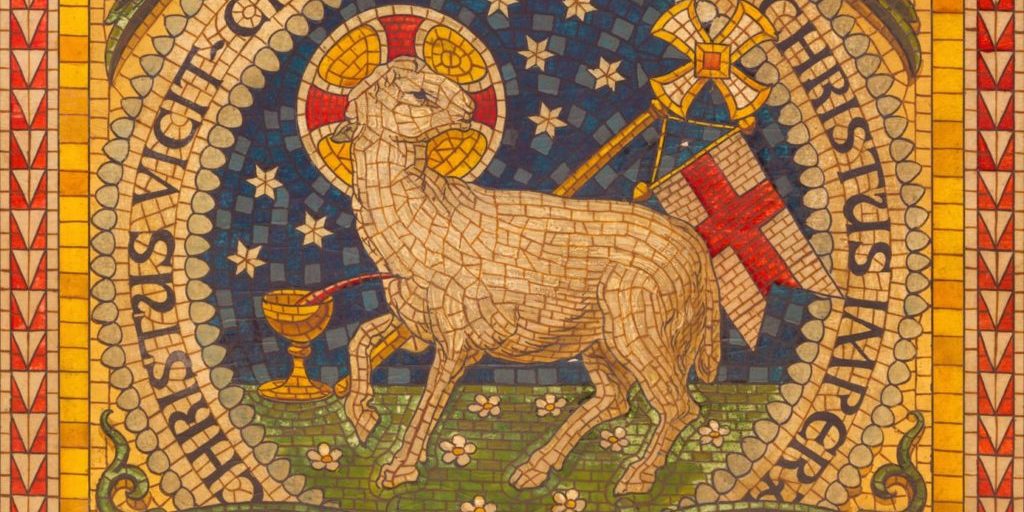
How the Book of Revelation Teaches the Trinity
While many people rightly think of John’s Gospel or Pauline epistles as clear articulations of Trinitarian theology in Scripture, the book of Revelation is often less cited.  This is understandable at some level—Revelation’s apocalyptic language is often difficult for readers to navigate. However, I argue that Revelation’s distinct apocalyptic elements actually help add color to Scripture’s portrait of the Trinity by describing the Father, Son, and Holy Spirit in its own idiom. Here are three ways Revelation contributes to the biblical portrait of the Trinity.
This is understandable at some level—Revelation’s apocalyptic language is often difficult for readers to navigate. However, I argue that Revelation’s distinct apocalyptic elements actually help add color to Scripture’s portrait of the Trinity by describing the Father, Son, and Holy Spirit in its own idiom. Here are three ways Revelation contributes to the biblical portrait of the Trinity.
-
Prophetic Witness
John’s vision(s) of the heavenly throne room closely resemble some of the OT prophetic throne-room visions. For example, there is a clear echo of visions like that of Isaiah 6 in John’s throne-room scenes. Given his extensive use of the prophets, it appears that John sees himself as a prophet who witnessed and recorded the fulfillment of God’s promises through the prophets, as Jesus himself told him to do. Nowhere in the NT do we see a vivid description of the heavenly activity of God’s throne with such detail. Click To TweetHowever, we do not see these types of detailed visions in the NT. Whereas Stephen gets a glimpse of Jesus at the Father’s right hand in Acts 7:55 and Paul is knocked off his horse by Jesus’s heavenly glory in Acts 9, nowhere in the NT do we see a vivid description of the heavenly activity of God’s throne with such detail.
As such, Revelation’s portrayal is a distinct contribution to trinitarian theology by giving the clearest glimpse of the Father, Son, and Holy Spirit on and around the throne, receiving worship and carrying out divine activity. Whereas other passages describe the Son and Spirit’s divine power and activity, it is Revelation that offers the most colorful portrait of what the triune God’s heavenly activity “looks like,” so to speak.
-
The Divine Lamb
Nowhere else is the divine lamb motif so central to Jesus’s identity. The idea of Jesus as the sacrificial lamb is mentioned in various ways throughout the NT. For example, John the Baptist sets up this idea in John 136: “When he saw Jesus passing by, he said, ‘Look, the Lamb of God!’” Moreover, all four Gospels allude to the slain lamb prophecy in Isaiah 53:7: “He was oppressed and afflicted, yet he did not open his mouth. Like a lamb led to the slaughter and like a sheep silent before her shearers, he did not open his mouth.” If we want a tangible portrait of hypostatic union or inseparable operations, for example, we need to look no further than Revelation. Click To TweetHowever, it is in Revelation where the picture of Jesus as the slain lamb reaches a fuller sense, because here we are able to see not only his connection with this OT theme, but his heavenly exaltation as the lamb who conquered sin and death and has now returned to his heavenly glory.
Jesus is not merely called a lamb in Revelation in some general sacrificial sense (which is powerful enough given its canonical weight); rather, this moniker becomes a type of title and identity for the work he did and still does. He is always slain and yet always alive. The eternal Son of God who stepped into creation and redeemed it from the inside out will himself usher in the New Jerusalem, as God promised long ago (Isa 52:9-10; Zech 8:3). Further, again, we get a glimpse into what Jesus is and will be “doing” in his work as the ascended high priest as he is shown to intercede for us, speak to the churches along with the Spirit (Rev 2-3), and enact salvation and judgment with the Father (Rev 1:8; 19-22). Put another way, if we want a tangible portrait of hypostatic union or inseparable operations, for example, we need to look no further than Revelation.
-
The Seven Spirits
The Holy Spirit’s mission as the revealer of God’s purposes is bolstered by Revelation’s representation of him. Throughout the NT, we are told that the Holy Spirit indwells us (1 Cor 3:16), reminds us of Jesus’s words (John 14:26), and gives us insight into the very mind of God (1 Cor 2). However, through the Spirit’s work in John’s vision, we are given a type of sneak peek into the heavenly throne room through a vivid multi-sensory illumination. While we should not expect similar throne-room visits ourselves, John’s vision allows us to see divine illumination in full color through John’s eyes. In Revelation 2-3, we see Jesus’s and the Spirit’s unity in illumination as both persons of the Trinity speak to the churches in Asia Minor, noting that the Spirit reinforces or reminds the churches of Jesus’s words at the end of each message. Paul describes this dynamic similarly in 1 Corinthians 2:14-16:
But the person without the Spirit does not receive what comes from God’s Spirit, because it is foolishness to him; he is not able to understand it since it is evaluated spiritually. The spiritual person, however, can evaluate everything, and yet he himself cannot be evaluated by anyone. “For who has known the Lord’s mind, that he may instruct him?” But we have the mind of Christ.
Do Christians have the mind of God, the mind of the Spirit, or the mind of Christ? The answer is yes. The doctrine of inseparable operations shows us that the one triune God always acts in unity.Do Christians have the mind of God, the mind of the Spirit, or the mind of Christ? The answer is yes. Click To Tweet
A related idea is Jesus’s promise to his disciples in John 14:26, that the Spirit would be sent to indwell his disciples and remind them of his words: “But the Counselor, the Holy Spirit, whom the Father will send in my name, will teach you all things and remind you of everything I have told you.” In Revelation, Jesus and the Spirit speak to the churches in Asia Minor in unison, modeling inseparable operations. Revelation’s depiction of the Spirit speaking alongside Jesus, acting with equal authority shows their unity and distinction, and is a palpable fulfillment of the promise Jesus made to his disciples (Rev 2-3).
Additionally, the “seven spirits” language about the Holy Spirit is unique to Revelation in comparison with other NT texts. While we can rely on other NT texts to assert the Spirit’s divinity and personhood, the doxological inclusion of the Spirit’s perfect, sevenfold divine power in Revelation offers a fuller understanding of his identity and activity (Rev 1:4-5). Moreover, the Spirit is also on the “throne side” of the heavenly topography as the one who brings John into the throne room (Rev 1:10; 4:1-2), proceeds from the throne as the ”eyes of the Lamb” (Rev 5:6), and is the river of life flowing from God and the Lamb’s throne (Rev 22:1-2; cf. John 4-7). John unsurprisingly draws on the OT to describe the Spirit’s work as the third person of the Trinity.
Conclusion
In this brief account, we see that Revelation offers a distinct contribution to Scripture’s unified witness to the triune God. In John’s own apocalyptic mode, he paints for us a portrait of the Trinity as the one God who reigns in heaven. May we look to Revelation for a vision of our triune God.
The above excerpt is adapted from The Trinity in the Book of Revelation: Seeing Father, Son, and Holy Spirit in John’s Apocalypse by Brandon D. Smith. Copyright 2022 by Brandon D. Smith. Published by InterVarsity Press, Downers Grove, IL. www.ivpress.com

